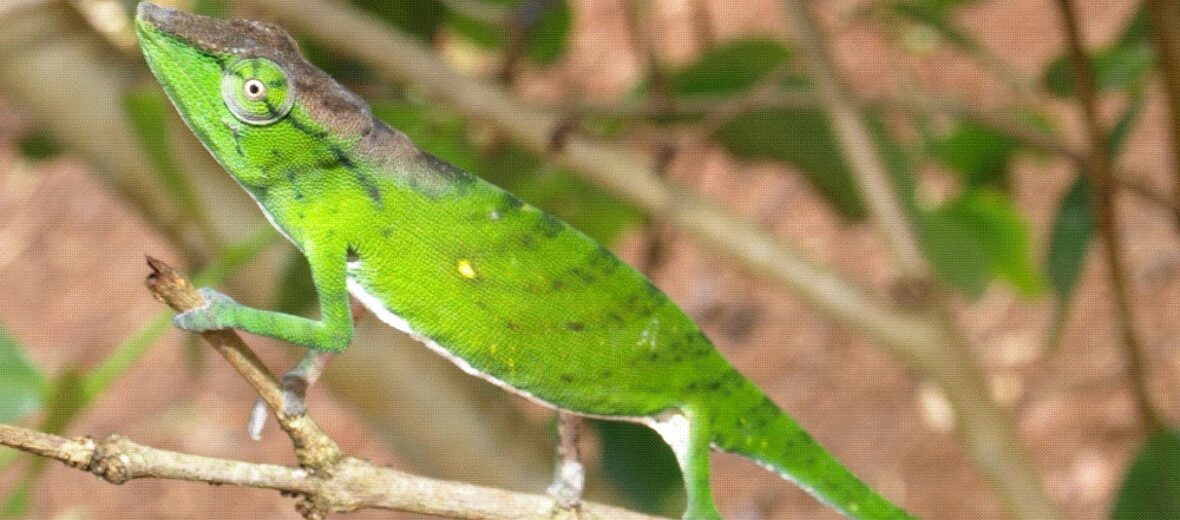
The Tarzan chameleon, aka Tarzan’s chameleon, hails only from central eastern Madagascar. They prefer the fragmented forest habitats outside of Tarzanville, Province Moramanga, Madagascar. Sadly, these chameleons are faced with the threats of habitat destruction at the hands of the logging industry, agriculture, and mining. The IUCN lists these chameleons as Critically Endangered. Their numbers are also decreasing.
First the Stats…
Scientific name: Calumma tarzan
Weight: Up to 1.06+ ounces
Length: Up to 5.9 inches
Lifespan: Up to 10 years
Now on to the Facts!
1.) These chameleons were named after the fictional character Tarzan.
2.) Like all chameleons, the Tarzan’s chameleon can change its coloration based on its mood. Contrary to popular opinion, chameleons don’t alter their colors to camouflage themselves.
3.) They prefer to hang out on the lower branches of bushes and trees.
4.) Tarzan chameleons, like other chameleons, are insectivores that eat a wide variety of insects and their larvae.
5.) Just like other known chameleons, they are diurnal (active during the day).
But wait, there’s more on the Tarzan chameleon!
6.) The Tarzan chameleon is solitary and only comes together to breed.
7.) Females lay up to 5 eggs that hatch in up to 6 months.
Did you know…?
These are the only known chameleon to possess a spade-like snout.
8.) This chameleon species was discovered in 2009.
9.) Birds and snakes are their primary predators.
10.) There are a number of conservation efforts in place currently to help re-establish this species.
Now a Short Tarzan Chameleon Video!
This video talks about chameleons in general.
Be sure to share & comment below! Also, check out the Critter Science YouTube channel. Videos added regularly!
Want to suggest a critter for me to write about? Let me know here.
Some source material acquired from: Wikipedia & IUCN
Photo credit: Sebastian Gehring



